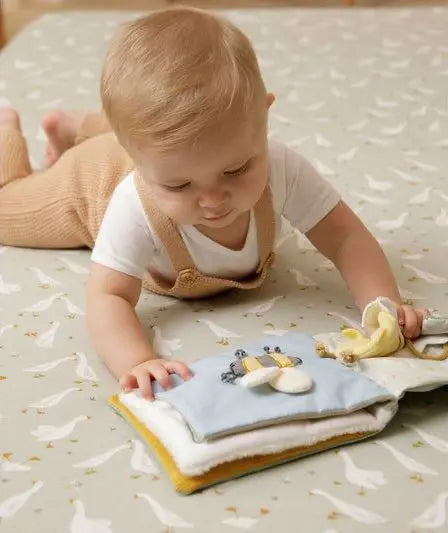
The Role of Sensory Play in Early Childhood Development
Share
Sensory Play in Early Childhood: Why It Matters
From birth, children begin to explore the world using their senses—touch, sight, sound, taste, and smell. This natural curiosity is the foundation of sensory play in early childhood. Sensory play isn’t just about fun textures and bright colours—it’s a vital tool that builds nerve connections in the brain, supporting language development, cognitive growth, and problem-solving abilities.
Through sensory play in early years, children develop a deeper understanding of their environment. By engaging their senses, they learn to observe, compare, and make decisions. Thoughtfully chosen sensory toys stimulate creativity, improve focus, and transform playtime into a meaningful learning experience.
The Key Benefits of Sensory Play in Early Childhood
Sensory play in early development supports a wide range of growth areas, making it one of the most impactful tools parents can introduce at home:
🔹 Boosts Brain Development – Exploring textures and patterns strengthens neural pathways and enhances memory and focus.
🔹 Enhances Motor Skills – Activities like stacking, grasping, or linking objects build coordination and refine both fine and gross motor abilities.
🔹 Supports Language Skills – Describing sensory experiences helps children build vocabulary and express themselves with confidence.
🔹 Fosters Creativity & Problem-Solving – Open-ended toys encourage independent thinking, imagination, and cognitive flexibility.
Top Sensory Toys by Age Group
Infants (0-12 Months):
In the earliest stage of life, sensory play in early infancy starts with simple, gentle stimuli like textures and contrasts.
✅ High Contrast Flashcards for Newborns – Stimulates visual tracking and brain development.
✅ Touch & Feel Sensory Activity Kit (6-12 months) – Engages multiple senses and boosts tactile curiosity.
Toddlers (1-3 Years):
Toddlers thrive with hands-on learning experiences that support sensory play in early movement and imagination.
✅ Preschool Vegetable Plush Set – Soft textures encourage role-play and tactile learning.
✅ Sea Animals Plush Toy Set – Promotes sensory awareness through pretend play.
✅ Fishing Pond Game – Strengthens fine motor coordination and early problem-solving.
Preschoolers (3-5 Years):
At this age, children benefit most from toys that combine sensory play in early learning with academic skills.
✅ Número - The Counting Caterpillar – Encourages number recognition and finger dexterity.
✅ Rainbow Popsicle Colour Matching Game – Teaches colour identification and matching.
✅ Ice Cream Counting Cones – Makes math fun through tactile, visual interaction.
The Importance of Screen-Free, Sensory Play
In our fast-paced, tech-driven world, screen-free play is more important than ever. Sensory play in early development helps children stay grounded in real-world experiences, improving attention spans, emotional regulation, and independent learning.
By choosing sensory-rich, interactive toys, parents can create a nurturing environment where children learn through movement, touch, and discovery—away from screens.
Final Thoughts
Sensory play in early childhood offers long-term developmental benefits—from cognitive and motor skills to emotional and language growth. It transforms play into an opportunity for lifelong learning.
Looking to nurture your child’s development with sensory-rich, screen-free fun?
✨ Explore GiGeeGaGaa’s collection of educational sensory toys and turn everyday play into a meaningful journey of discovery!
